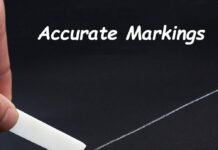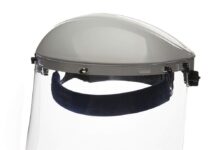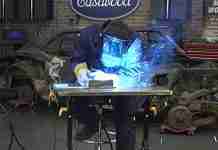In order to ensure efficient assembly and layout processes, it is vital to carefully consider the choice of surfaces on which these tasks will be performed. The selection of appropriate surfaces can greatly impact the productivity and accuracy of these operations. Whether it is the assembly of intricate electronics or the arrangement of components in a manufacturing facility, the right surface is key to achieving optimal results. In this article, we explore the importance of choosing recommended surfaces for assembly and layout, and discuss some of the key factors to consider in making this decision.
1. Wood surfaces
Wood surfaces are a popular choice for assembly and layout due to their durability and versatility. There are several types of wood surfaces commonly used in various applications.
1.1 Solid wood
Solid wood surfaces, made from a single piece of timber, offer excellent strength and stability. They are often used for heavy-duty applications and can withstand the weight of heavy objects. Solid wood surfaces also have a natural beauty that adds warmth and charm to any workspace.
1.2 Plywood
Plywood is made by layering thin sheets of wood together, with the grain of each layer perpendicular to the one below it. This construction method enhances the strength and stability of the surface. Plywood surfaces are lightweight yet durable, making them suitable for both heavy and light-duty tasks. They are commonly used in workshops, garages, and construction sites.
1.3 MDF (Medium Density Fiberboard)
MDF surfaces are made from wood fibers and resin bonded together under high pressure. The resulting surface is smooth, flat, and uniform in density, making it ideal for precise assembly and layout work. MDF surfaces do not have natural grain patterns, which can be advantageous for tasks that require a consistent work area.
1.4 Particle board
Particle board surfaces are made from small wood particles bonded together with adhesive and compressed under heat and pressure. While they are not as strong as solid wood or plywood, particle board surfaces are affordable and offer a smooth and even work area. They are commonly used in budget-friendly workspaces or temporary setups.
2. Metal surfaces
Metal surfaces are known for their strength, durability, and resistance to wear and tear. They are often preferred in industrial and commercial settings where heavy-duty tasks are performed.
2.1 Stainless steel
Stainless steel surfaces are highly resistant to corrosion, making them suitable for working with liquids, chemicals, and food substances. They are easy to clean, sanitize, and maintain, making them an excellent choice for assembly and layout work in cleanroom environments or food processing facilities.
2.2 Aluminum
Aluminum surfaces offer a lightweight yet sturdy work area. They are resistant to rust and corrosion, making them suitable for outdoor applications. Aluminum surfaces are commonly used in aerospace, automotive, and electronics industries due to their excellent conductivity and heat dissipation properties.
2.3 Galvanized steel
Galvanized steel surfaces are coated with a layer of zinc to enhance their corrosion resistance. They are highly durable and can withstand heavy loads and rough handling. Galvanized steel surfaces are commonly used in warehouses, workshops, and construction sites where robustness and longevity are essential.
3. Plastic surfaces
Plastic surfaces are lightweight, versatile, and easy to clean, making them suitable for a wide range of assembly and layout tasks.
3.1 Acrylic
Acrylic surfaces offer a smooth and transparent work area. They are resistant to shattering and can withstand impacts, making them suitable for tasks that require careful handling of delicate materials. Acrylic surfaces are commonly used in laboratories, electronics assembly, and arts and crafts settings.
3.2 PVC (Polyvinyl Chloride)
PVC surfaces are affordable and versatile. They are resistant to chemicals, oils, and moisture, making them ideal for use in industrial environments. PVC surfaces are commonly used in assembly lines, factories, and production facilities due to their durability and ease of maintenance.
3.3 HDPE (High-Density Polyethylene)
HDPE surfaces are known for their excellent impact resistance and strength. They are lightweight yet sturdy, making them suitable for heavy-duty applications. HDPE surfaces are commonly used in workshops, manufacturing plants, and garages due to their ability to withstand rough handling and exposure to various chemicals.
4. Glass surfaces
Glass surfaces offer a sleek and elegant look while providing a smooth and easy-to-clean work area. They are often chosen for their aesthetic appeal and durability.
4.1 Tempered glass
Tempered glass surfaces are made by subjecting regular glass to a process of controlled heating and rapid cooling. This creates a surface that is stronger and more resistant to breakage than regular glass. Tempered glass surfaces are commonly used in applications that require high strength and resistance to impact, such as electronics assembly and display cases.
4.2 Borosilicate glass
Borosilicate glass surfaces are known for their resistance to thermal shock and high temperatures. They can withstand rapid temperature changes without breaking, making them ideal for applications that involve heating or cooling processes. Borosilicate glass surfaces are commonly used in laboratories, scientific research facilities, and industrial settings.
4.3 Float glass
Float glass surfaces, also known as flat glass or annealed glass, are made by pouring molten glass onto a bed of molten metal. They offer a smooth and flat work area, making them suitable for assembly and layout tasks that require precision. Float glass surfaces are commonly used in offices, architectural settings, and art studios.
5. Composite surfaces
Composite surfaces are made by combining different materials to create a stronger and more durable surface. They offer a balance of strength, versatility, and aesthetics.
5.1 Carbon fiber
Carbon fiber surfaces are lightweight yet exceptionally strong and rigid. They offer excellent resistance to bending and impact, making them suitable for high-performance applications. Carbon fiber surfaces are commonly used in aerospace, automotive, and sports industries.
5.2 Fiberglass
Fiberglass surfaces are made by combining glass fibers with a resin matrix. They offer good strength and durability while being lightweight. Fiberglass surfaces are commonly used in boat building, automotive parts, and construction applications.
5.3 GFRP (Glass Fiber Reinforced Plastic)
GFRP surfaces are made by combining glass fibers with a plastic matrix, usually fiberglass and epoxy resin. They offer a versatile work area that is lightweight, durable, and resistant to moisture and chemicals. GFRP surfaces are commonly used in marine, automotive, and architectural applications.
6. Rubber surfaces
Rubber surfaces offer excellent shock absorption and grip, making them ideal for tasks that require comfort and safety.
6.1 Rubber mats
Rubber mats provide a cushioned work area that reduces fatigue and discomfort caused by prolonged standing. They also offer slip resistance, making them suitable for environments where liquid spills are common, such as kitchens or laboratories. Rubber mats are commonly used in workshops, gyms, and healthcare facilities.
6.2 Neoprene
Neoprene surfaces are made from a synthetic rubber material that offers excellent resistance to oils, chemicals, and extreme temperatures. They provide a comfortable and non-slip work area, making them suitable for applications that require stable footing. Neoprene surfaces are commonly used in automotive, marine, and industrial settings.
6.3 Silicone
Silicone surfaces offer excellent heat resistance and flexibility. They are non-toxic and resistant to chemicals, making them suitable for food preparation and medical applications. Silicone surfaces also provide a non-slip work area, making them ideal for tasks that involve handling delicate materials. Silicone surfaces are commonly used in kitchens, laboratories, and cleanroom environments.
7. Cork surfaces
Cork surfaces offer a soft and natural work area that provides comfort and insulation.
7.1 Cork sheets
Cork sheets provide a resilient and self-healing work surface. They are naturally anti-static, making them suitable for tasks that involve sensitive electronic components. Cork sheets also offer excellent sound insulation properties, making them ideal for environments where noise reduction is desired. Cork sheets are commonly used in electronics assembly, sound recording studios, and educational settings.
7.2 Cork tiles
Cork tiles offer a durable and easy-to-maintain work area. They are resistant to moisture, mold, and mildew, making them suitable for applications that require a clean and hygienic surface. Cork tiles also provide cushioning and thermal insulation properties, making them comfortable to work on even for extended periods. Cork tiles are commonly used in offices, libraries, and residential settings.
8. Masonite surfaces
Masonite surfaces, also known as hardboard or fiberboard, offer a smooth and consistent work area that is resistant to warping and moisture.
8.1 Hardboard
Hardboard surfaces are made by compressing wood fibers under high pressure to create a dense and durable surface. They offer a smooth and stable work area that is resistant to scratches and dents. Hardboard surfaces are commonly used in woodworking shops, art studios, and construction sites.
8.2 Perforated hardboard
Perforated hardboard surfaces have evenly spaced holes on the surface, allowing for customization and flexibility in organizing tools and equipment. They offer a versatile work area that can be easily adapted to specific assembly and layout needs. Perforated hardboard surfaces are commonly used in garages, workshops, and tool storage areas.
9. ESD (Electrostatic Discharge) surfaces
ESD surfaces are designed to dissipate static electricity, making them essential for protecting sensitive electronic components from static damage.
9.1 ESD mats
ESD mats provide a conductive work area that prevents the build-up of static electricity. They protect electronic devices and assemblies from damage caused by static discharge. ESD mats are commonly used in electronics manufacturing, repair facilities, and laboratories.
9.2 ESD workbenches
ESD workbenches, also known as ESD protected workstations, offer a comprehensive solution for static control in assembly and layout work. They include various components such as ESD mats, wrist straps, and grounding systems to provide a static-safe environment. ESD workbenches are commonly used in electronics assembly, testing, and quality control areas.
10. Anti-fatigue surfaces
Anti-fatigue surfaces are designed to reduce fatigue and discomfort caused by prolonged standing, providing a more comfortable work environment.
10.1 Anti-fatigue mats
Anti-fatigue mats offer cushioning and support for the feet, legs, and back, reducing the strain caused by prolonged standing. They promote proper blood circulation and help prevent musculoskeletal disorders. Anti-fatigue mats are commonly used in assembly lines, factories, and standing workstations.
10.2 Ergonomic flooring
Ergonomic flooring systems provide a comprehensive solution for reducing fatigue and discomfort. They offer a combination of anti-fatigue properties, slip resistance, and ease of maintenance. Ergonomic flooring is commonly used in industrial and commercial settings where employees are required to stand for extended periods, such as assembly areas, laboratories, and healthcare facilities.
In conclusion, choosing the right surface for assembly and layout work is crucial for ensuring productivity, comfort, and safety. Wood, metal, plastic, glass, composite, rubber, cork, masonite, ESD, and anti-fatigue surfaces all have their unique advantages and are suitable for various applications. Consider the specific requirements of your workspace and tasks to select the most appropriate surface that meets your needs.





































